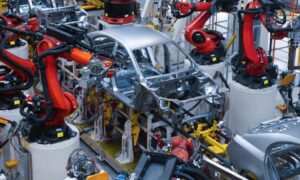Recycling methods have come a long way in the past 25 years. E-waste recycling firms are now able to recover materials that would have gone to waste in the past. With the increased efficiency in recycling methods comes a lower carbon footprint for the electronics industry and for the consumer.
The CEO of SAMR Inc., Albert Boufarah, explains how new methods in the recycling industry have caused an increase in the number of reusable materials.
The Plastics Crisis
A study published in the journal Royal Society Philosophical Transactions Biological Sciences found that 4 percent of the world’s oil and gas production was used in the manufacturing of plastic products. Another 3 to 4 percent of this non-renewable resource was used to transport these products.
Plastics are polluting our environment, especially our oceans, and piling up in landfills. Since there are so many wasteful cases of single-use or limited-use plastic products that will be discarded within a year, it quickly becomes clear that this system of production cannot last for many more years. Advanced recycling of plastics means that more materials can be reused, cutting down on the carbon footprint from the production and shipment of these products.
New Methods of Recycling Plastics
Advanced techniques in recycling plastics include the use of robots to separate and identify materials and sort them for the recycling process. These AI-enabled robots are able to make fine distinctions between materials that the human eye cannot match. This means that more materials will be recycled in appropriate ways.
Infrared (IR) systems are also being used to separate the waste stream. IR can pick out different types of plastics and determine their composition, sorting them properly.
Plastics are being developed which are easier to recycle. Much of the waste stream results from polyethylene and polypropylene materials. A new hybrid form of these plastics makes a copolymer that lasts longer, is appropriate for more applications, and is easier to recycle than polyethylene and polypropylene on their own.
Another advanced technique for recycling plastic involves a reduction in the amount of water needed for the process. Some recycling companies have pioneered the use of systems that can clean, cool, and recycle plastics without the use of water. Reduced energy and water use are another important way that recycling reduces the environmental impact of plastics.
Innovations in Metal Recycling
One of the key byproducts of recycling electronics is metal. Gold, copper, tin, and aluminum are only a few examples of the metals used to manufacture high-tech devices. In the past, metals were not often removed from high-tech products when they were recycled.
The special characteristic of metals is that they do not lose their properties when they are recycled. They can continue to exist in a useful form well beyond the lifespan of the product that contains them. This means that recycling metals from high-tech products is a winning proposition.
New methods, like the use of robotics, can detect the presence of recyclable metals and appropriately divert the materials in the recycling line. Apple has introduced a recycling robot called Daisy that properly separates materials for reuse and recycling. This machine is responsible for recycling 200 iPhone units per hour.
Glass Recycling
Glass as a material has made incredible strides over the past 25 years. New touchscreens made of Gorilla Glass and other highly advanced materials have made computer products more durable and safer to operate. The glass recycling system has not changed as much as the plastic and metal recycling systems, but there are some notable changes to mention.
Unfortunately, not all glass products used in electronics products are recyclable. One of the most notorious offenders is CRT glass used in old tube computer monitors and televisions. This is because the glass contains a high volume of lead. There are a great number of these products in the recycling waste stream, and much of that material is lost.
Advances in Recycling Benefit Our Carbon Footprint
Electronics users should be aware of the ways in which their products can be recycled. Albert Boufarah encourages all owners of electronic devices to look into the benefits of recycling their machines rather than releasing them into the waste stream.
When more materials are recycled, the global carbon footprint is improved. Fewer resources are needed for producing or transporting electronics. The most exciting advances in recycling have come in the area of plastics, with glass and metals also experiencing significant changes in their recycling processes. Taking care to separate these products from the general waste stream can have a positive impact on the Earth’s environment and offset some of the costs of our technological advancements.



































